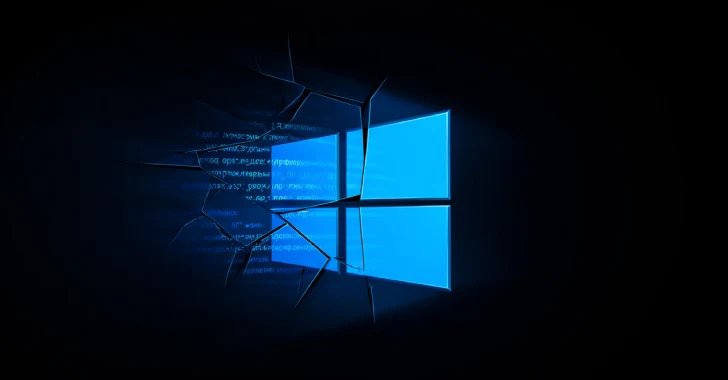Quick Takeaways
- The Russian hacking group EncryptHub is exploiting a now-patched Microsoft Windows vulnerability (CVE-2025-26633) using social engineering and malicious MSC files to deliver malware.
- They deploy sophisticated methods like fake job offers, compromised platforms, and fake video conferencing tools to infect targets with stealer malware such as Fickle Stealer, bypassing defenses through encrypted command-and-control (C2) communications.
- Attack sequences involve tricking victims into executing malicious MSC files that fetch and run PowerShell scripts, establishing persistence, collecting system info, and communicating with C2 servers to deploy further payloads.
- EncryptHub utilizes abused legitimate platforms like Brave Support to host malware, demonstrating resourcefulness in bypassing restrictions, and employs layered tactics—including fake pop-ups and background traffic—to evade detection and maintain control.
Key Challenge
The malware group EncryptHub, a Russian hacking collective known for their high-paced and resourceful cyber campaigns, has continued exploiting a security flaw in Microsoft Windows (CVE-2025-26633) despite it being patched, in order to deliver malicious payloads. Reported by Trustwave SpiderLabs, the attack involves a sophisticated blend of social engineering, where the attackers pose as IT personnel via fake Microsoft Teams requests, and technical exploitation using rogue Microsoft Console (MSC) files. When victims open these files, the malware leverages the vulnerability to execute malicious PowerShell scripts, which establish persistence, collect system data, and communicate with encrypted command servers to deploy additional malware, including a stealer known as Fickle Stealer. The attackers also use compromised legitimate platforms like Brave Support for hosting malware, and employ deceptive tactics such as fake video conferencing tools to lure victims into downloading harmful files. This series of actions demonstrates EncryptHub’s adaptable and well-funded approach, emphasizing the need for robust security measures, user awareness, and layered defense strategies to counter such complex cyber threats.
Critical Concerns
Cyber risks, exemplified by the EncryptHub campaign, pose significant threats to organizations by exploiting vulnerabilities like CVE-2025-26633 in Windows, often bypassing defenses through sophisticated social engineering tactics such as fake video conferencing platforms and impersonations of IT personnel. These cybercriminal activities involve deploying a multifaceted arsenal—malicious MSC files, PowerShell scripts, Golang backdoors, and abuse of legitimate platforms like Brave Support—to establish persistent access, exfiltrate sensitive data, and deploy additional malware like stealer tools. The impact is profound: compromised systems can lead to data theft, financial loss, operational disruption, and erosion of trust, emphasizing the urgent need for layered security, ongoing threat intelligence, and reinforced user awareness to mitigate such evolving threats.
Possible Next Steps
Addressing the Russian Group EncryptHub Exploits MSC EvilTwin Vulnerability swiftly and effectively is crucial to safeguarding sensitive information, maintaining network integrity, and preventing widespread malware infiltration. Prompt remediation not only limits potential damage but also reinforces cybersecurity defenses against evolving threats.
Mitigation Steps
-
Patch Implementation: Apply the latest security updates and patches provided by system vendors to fix known vulnerabilities related to MSC EvilTwin.
-
Network Segmentation: Isolate critical systems and sensitive data to contain potential malware spread and reduce attack surface.
-
Enhanced Monitoring: Deploy advanced intrusion detection and prevention systems to identify suspicious activities associated with EvilTwin exploits.
- Access Controls: Enforce strict access policies and multi-factor authentication to prevent unauthorized exploitation.
Remediation Steps
-
Malware Removal: Conduct comprehensive scans using reputable anti-malware tools to detect and eliminate Fickle Stealer malware.
-
Credential Reset: Change all affected user credentials, especially those potentially compromised through malware activity.
-
System Restoration: Reinstall or restore affected systems from clean backups to eliminate persistent malware traces.
- Security Review: Perform a thorough security audit to identify and rectify methodical breaches and strengthen defenses beyond the immediate remediation.
Advance Your Cyber Knowledge
Explore career growth and education via Careers & Learning, or dive into Compliance essentials.
Understand foundational security frameworks via NIST CSF on Wikipedia.
Disclaimer: The information provided may not always be accurate or up to date. Please do your own research, as the cybersecurity landscape evolves rapidly. Intended for secondary references purposes only.
Cyberattacks-V1

